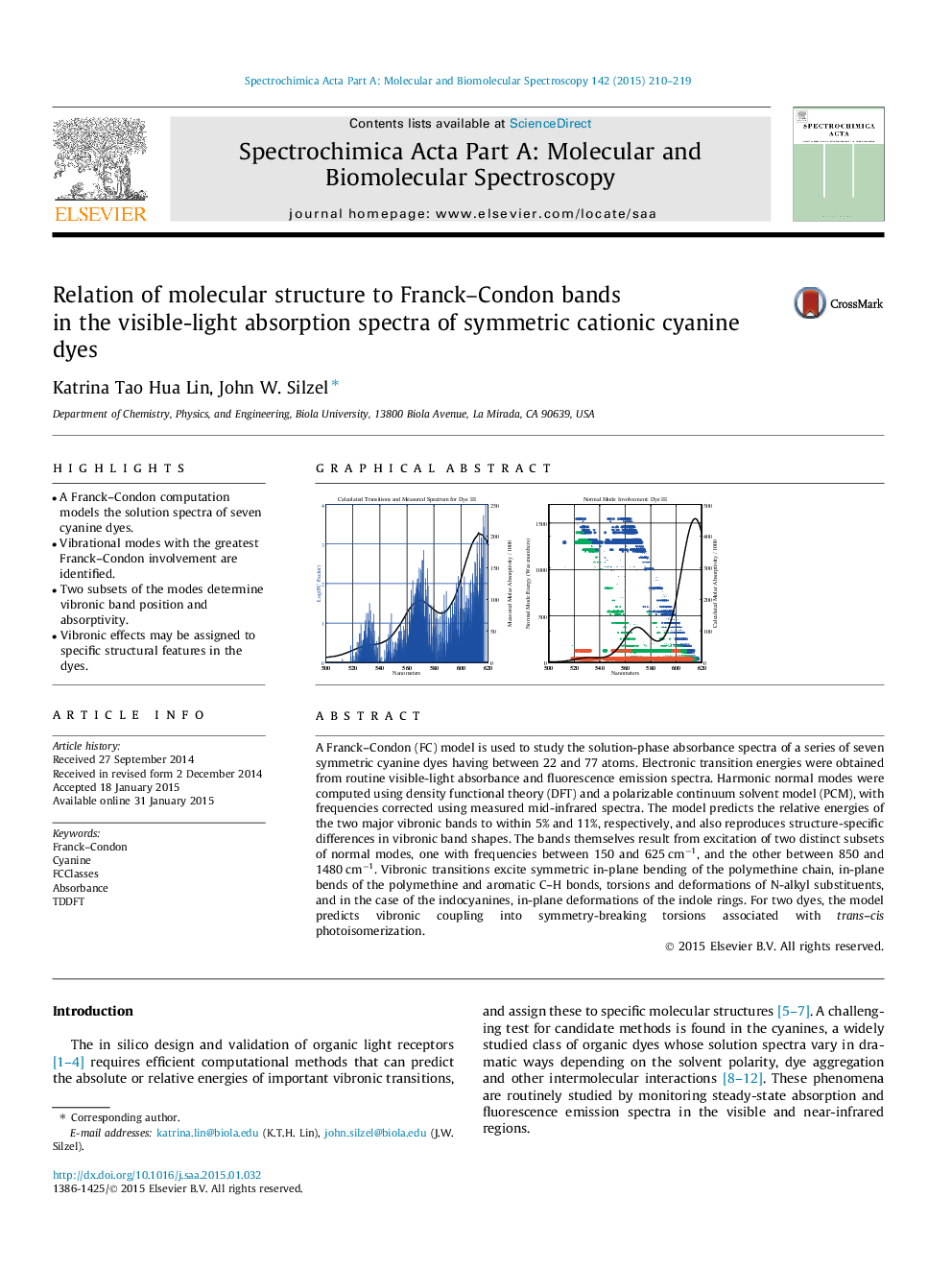| Article ID | Journal | Published Year | Pages | File Type |
|---|---|---|---|---|
| 1229174 | Spectrochimica Acta Part A: Molecular and Biomolecular Spectroscopy | 2015 | 10 Pages |
•A Franck–Condon computation models the solution spectra of seven cyanine dyes.•Vibrational modes with the greatest Franck–Condon involvement are identified.•Two subsets of the modes determine vibronic band position and absorptivity.•Vibronic effects may be assigned to specific structural features in the dyes.
A Franck–Condon (FC) model is used to study the solution-phase absorbance spectra of a series of seven symmetric cyanine dyes having between 22 and 77 atoms. Electronic transition energies were obtained from routine visible-light absorbance and fluorescence emission spectra. Harmonic normal modes were computed using density functional theory (DFT) and a polarizable continuum solvent model (PCM), with frequencies corrected using measured mid-infrared spectra. The model predicts the relative energies of the two major vibronic bands to within 5% and 11%, respectively, and also reproduces structure-specific differences in vibronic band shapes. The bands themselves result from excitation of two distinct subsets of normal modes, one with frequencies between 150 and 625 cm−1, and the other between 850 and 1480 cm−1. Vibronic transitions excite symmetric in-plane bending of the polymethine chain, in-plane bends of the polymethine and aromatic C–H bonds, torsions and deformations of N-alkyl substituents, and in the case of the indocyanines, in-plane deformations of the indole rings. For two dyes, the model predicts vibronic coupling into symmetry-breaking torsions associated with trans–cis photoisomerization.
Graphical abstractFigure optionsDownload full-size imageDownload as PowerPoint slide
